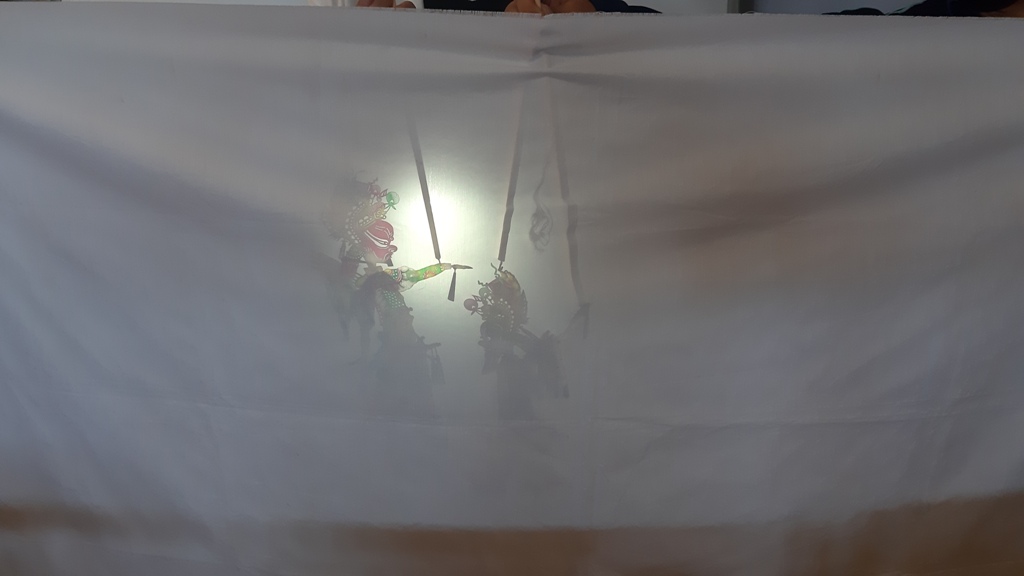St. Margaret College Secondary School Verdala Science CCP students learn about Chinese Shadow Puppetry
On Wednesday, 2nd February 2022, a group of Form 4 (year 10) Science Core Curriculum Programme (CCP) students at St. Margaret College Secondary School Verdala, Cospicua learned about Chinese Shadow Puppetry. This school project was coordinated by Senior Science teacher Martin Azzopardi sdc and it was related to the science study unit about forces. The Science China Corner of St. Margaret College is a Montessori Method of teaching and many students are benefitting from research study projects about Chinese culture related to science and technology.

Chinese Shadow Puppetry originated 2,000 years ago during the Han dynasty. History has it that when Emperor Wu’s concubine died of illness, the emperor felt so bad that he lost all interest in life and state affairs. So one of his ministers decided to create a cotton puppet of the Emperor’s dead concubine and at night he invited the Emperor to watch a rear-illuminated puppet show behind a curtain. Since then Chinese puppetry shows became popular in China especially during the Tang (618-907 A.D.) and Song (960-1279 A.D.) dynasties. Shadow puppets were first made of paper and later from the leather of donkeys, sheep and oxen. In fact, the Chinese word for Shadow Puppets is “Pi Ying” which means “shadows of leather”.
During the reign of Emperor Kangxi, eight puppeteers were paid to entertain members of the royal family in the prince’s mansion. However, from 1796 to 1800, this folk art was forbidden in China due to the spreading of the peasant uprising. Then it re-emerged after 1821 and continued to be a popular Chinese folk art till nowadays.
The making process of Chinese Shadow Puppetry involves ten processes with meticulous techniques and specialized tools. The tools employed by carvers are homemade and their techniques are handled down from one generation to another.
To perform shadow puppetry, a white cloth screen is used on which the shadow of flat puppets is projected. Normally, the operator plays five puppets at the same time, each of which has three threads. This means that ten fingers handle 15 threads and that is why the Chinese Shadow Puppet operator is very often compared to the 1000-hand Guan-yin – a Buddhist Bodhisattva goddess of compassion.

Sometimes lavish background pieces are used in Shadow Puppet shows, including furniture, architecture, vessels and patterns. Chinese heroes from history and folklore, such as the four ancient beauties, Xi Shi, Wang Zhaojun, Diao Chan, and Yang Guifei; or the Monkey King, Emperor Qin Shi Huang are very popular in Chinese Shadow Puppetry shows
The most popular province in China known for Shadow Puppetry is Shaanxi, a north-western Chinese province whose ancient capital is Xi’an. In fact, the city of Xi’an is known for the Academy Gate Cultural Street where Chinese shadow puppet souvenirs (which vary in image, size and poses) are sold.
Today the China Ministry of Culture is working hard to preserve this long folk tradition in China.
In this school project, students had the opportunity to play with Chinese Shadow Puppet samples and apply different forces to make different movements.
Teacher Martin Azzopardi and his students offer special thanksgivings to the Malta China Cultural Centre and the China Embassy in Malta for their continuous help and support. Thanks also go to class LSE, Mr Ruben Buttigieg for his support during the project work.
Written by
St. Margaret College Secondary School Verdala Form 4 (year 10) students; Zammit Caydon and Santelli Gaetano with the help of Senior Science teacher Martin Azzopardi sdc.

